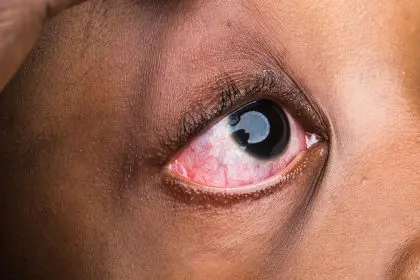That persistent cough might be nothing—or it might signal something that needs medical attention. Understanding the timeline, characteristics, and accompanying symptoms can help you determine when to seek professional care.
Coughing serves as one of the body’s most important protective reflexes, designed to clear irritants and mucus from the airways. Most coughs resolve on their own within days or weeks, but sometimes this common symptom signals a more serious underlying condition requiring prompt attention. Knowing when to wait it out versus when to worry can make a significant difference in health outcomes and peace of mind.
The timeline matters
Duration provides the first crucial clue in evaluating the significance of a cough. Different timeframes suggest different potential causes and levels of concern.
Acute coughs lasting less than three weeks typically result from viral respiratory infections like the common cold or flu. These coughs tend to improve gradually, with most resolving completely by the two-week mark. During the first phase, the cough often feels dry and ticklish before potentially becoming more productive with clear or white mucus as the infection resolves.
Subacute coughs persist between three and eight weeks. These often represent the lingering aftermath of respiratory infections where the airways remain hypersensitive even after the infection clears. Post-viral coughs commonly fall into this category, gradually improving over time without specific treatment beyond symptomatic relief.
Chronic coughs continuing beyond eight weeks merit medical evaluation. This extended duration suggests underlying conditions requiring diagnosis and targeted treatment rather than simple supportive care. The persistence alone warrants professional assessment even if the cough seems otherwise mild or manageable.
Red flag symptoms that demand attention
Certain symptoms accompanying a cough signal potentially serious conditions requiring prompt medical attention regardless of how long the cough has been present.
Blood in coughed-up mucus (hemoptysis) always necessitates medical evaluation. While small streaks occasionally appear with forceful coughing due to broken capillaries, frank blood or repeatedly blood-tinged mucus may indicate infections, inflammatory conditions, or potentially malignancies that require immediate assessment.
Difficulty breathing or shortness of breath, especially when occurring suddenly or worsening progressively, represents an urgent concern. This includes wheezing, chest tightness, or the feeling of not getting enough air. These symptoms might indicate conditions ranging from asthma to pneumonia or pulmonary embolism, some of which constitute medical emergencies.
Chest pain, particularly sharp pain that worsens with breathing or coughing, suggests potential pleurisy, pneumonia, or other conditions affecting the lungs and surrounding tissues. Crushing or squeezing chest pain might indicate cardiac issues, which always warrant emergency evaluation.
Thick, colored mucus, especially yellow-green or rust-colored, often indicates bacterial infection requiring antibiotic treatment. When accompanied by fever, chills, and fatigue, these symptoms suggest conditions like bacterial pneumonia or bronchitis rather than viral infections.
Severe fatigue, weight loss, night sweats, or persistent fevers alongside a cough paint a concerning picture potentially indicating chronic infections like tuberculosis, fungal diseases, or malignancies that require comprehensive evaluation.
Five concerning patterns based on age
Age significantly influences when and why a cough should trigger concern:
- For infants and young children, respiratory symptoms take on greater significance. High-pitched, barking coughs (croup) or whooping sounds after coughing fits require prompt assessment. Additionally, any breathing difficulty in children manifesting as flaring nostrils, visible retractions between or below the ribs, or bluish coloration demands emergency care.
- School-aged children frequently experience coughs due to common respiratory infections. However, coughs predominantly occurring during physical activity, especially with wheezing, suggest exercise-induced asthma requiring proper diagnosis and management.
- Adolescents and young adults with chronic coughs should consider allergic conditions, asthma, or, particularly in smokers, early signs of chronic obstructive pulmonary disease (COPD). Persistent coughs in this age group should not be dismissed as “normal” without evaluation.
- Middle-aged adults, especially those with risk factors like smoking history or occupational exposures, should take chronic coughs seriously as potential indicators of COPD, lung cancer, or interstitial lung diseases before these conditions progress to advanced stages.
- Older adults face additional concerns with coughing. Age-related changes in swallowing function increase aspiration risk, while heart failure can manifest primarily as a chronic cough. Medication side effects, particularly from ACE inhibitors for blood pressure, commonly cause persistent dry coughs in this population.
Underlying medical conditions to consider
Certain medical conditions increase both the likelihood of developing significant coughs and the importance of evaluating them promptly.
Asthma typically presents with coughing triggered by specific exposures, exercise, cold air, or respiratory infections. The cough often worsens at night or early morning and may accompany wheezing, chest tightness, and breathing difficulty. Some people experience cough-variant asthma where coughing represents the predominant or only symptom, making diagnosis challenging without proper pulmonary function testing.
COPD develops gradually, with chronic coughing often dismissed as “smoker’s cough” before more serious symptoms emerge. Early morning coughs producing mucus, slowly worsening exercise tolerance, and recurring respiratory infections suggest this progressive condition requiring intervention to slow decline.
Gastroesophageal reflux disease (GERD) frequently causes chronic coughing when stomach acid irritates the esophagus and triggers reflexive coughing. This cough typically worsens after meals, when lying down, or during sleep. Many people with reflux-related coughs never experience the classic heartburn symptoms, making this diagnosis easy to miss without proper evaluation.
Post-nasal drip from allergies or chronic sinusitis creates a persistent tickle in the throat leading to chronic coughing. This cough often feels worse in the morning due to nighttime mucus accumulation and may accompany throat clearing, hoarseness, and the sensation of something dripping down the back of the throat.
Heart failure sometimes manifests primarily as a cough, particularly when lying flat (hence the term “cardiac cough”). Accompanying symptoms like ankle swelling, fatigue, and exercise intolerance provide important diagnostic clues, though these develop gradually and might go unnoticed.
When medications cause the problem
Medication-induced coughs account for a significant percentage of chronic cases, particularly among older adults taking multiple prescriptions. ACE inhibitors (medications ending in “-pril” like lisinopril, enalapril) famously cause dry, ticklish coughs in approximately 20% of patients taking them for hypertension or heart conditions. This cough develops gradually, sometimes months after starting the medication, making the connection easy to miss.
Inhaled corticosteroids used for asthma or COPD management sometimes cause throat irritation and fungal infections (thrush) that trigger coughing. Beta-blockers occasionally worsen underlying asthma symptoms, including cough, especially in susceptible individuals.
Importantly, medication-related coughs resolve when the causative drug stops, though this decision requires medical guidance to ensure appropriate alternatives replace necessary treatments.
The international travel consideration
Recent international travel adds another dimension to cough evaluation. Certain infectious diseases uncommon in the United States but prevalent elsewhere—including tuberculosis, certain fungal infections, and parasitic diseases—can cause persistent coughing. Always mention travel history when seeking medical evaluation for a cough that developed during or after international trips, particularly to regions with higher tuberculosis prevalence.
Making the decision to seek care
Ultimately, deciding when to seek medical care for a cough requires balancing vigilance against undue anxiety. Consider medical evaluation for coughs that: Persist beyond three weeks without clear improvement; Produce blood or discolored mucus; Accompany breathing difficulty, chest pain, or fever; Cause significant sleep disruption or daily life interference; Develop in individuals with underlying lung or heart conditions and; Occur alongside concerning systemic symptoms like weight loss or fatigue
While most coughs resolve without specific intervention, recognizing the warning signs that distinguish benign, self-limiting coughs from those requiring medical attention ensures proper care when it matters most. The body’s natural protective mechanism sometimes serves as an important messenger alerting us to conditions requiring attention—wisdom lies in knowing when to listen.
















